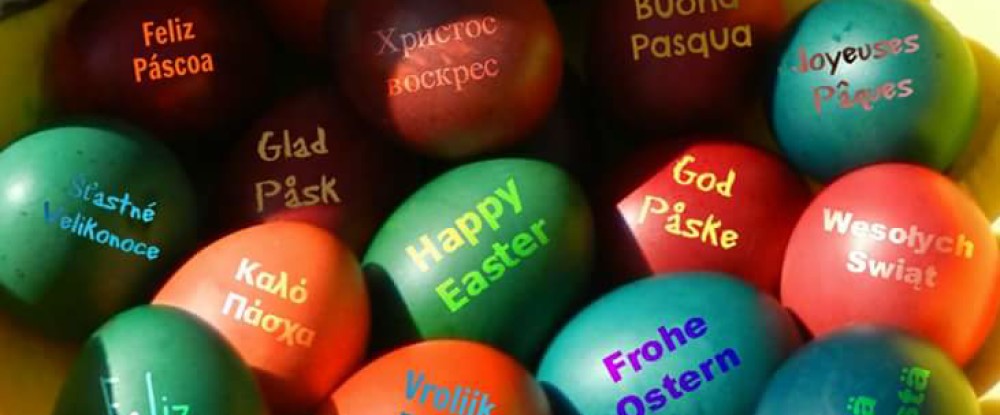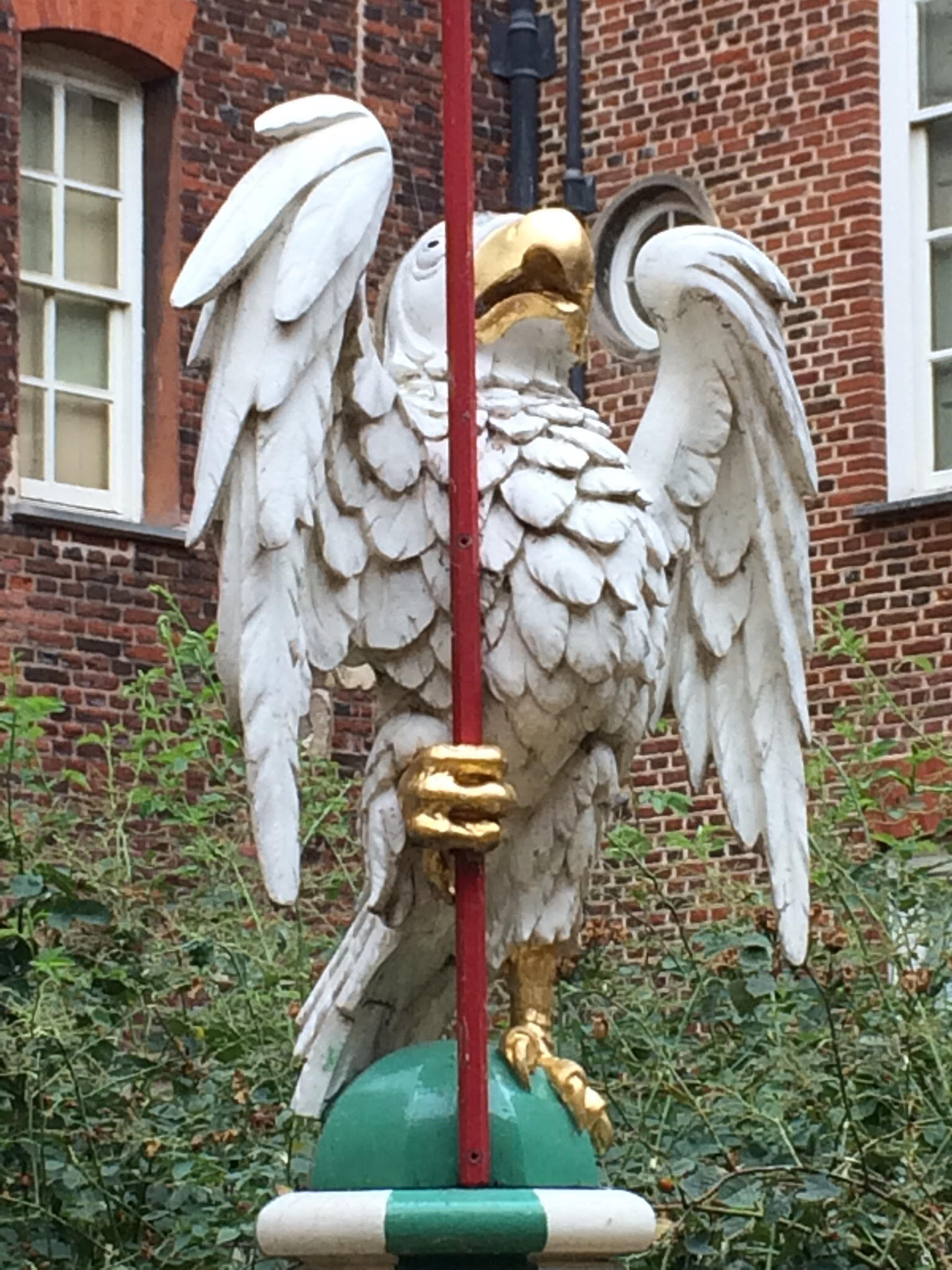
There are ten statues of heraldic animals, called the King’s Beasts, that stand on the bridge over the moat leading to the great gatehouse of Hampton Court. These statues represent the ancestry of King Henry VIII and his third wife Jane Seymour. Queen Elizabeth I replaced some of these animals when she was crowned. This is the white falcon of the Plantagenets.
Only a short train ride from London, Hampton Court is one of the royal palaces of the British monarchs, built by Cardinal Wolsey for himself in 1515. But he gave it to King Henry VIII as a bribe in 1529, an attempt to keep his position as Chancellor and counselor of the king despite his failure to obtain the Pope’s permission for Henry to set aside his wife Katherine of Aragon to marry Anne Boleyn. It has been used by the British royalty ever since although King George II was the last monarch to actually live there.
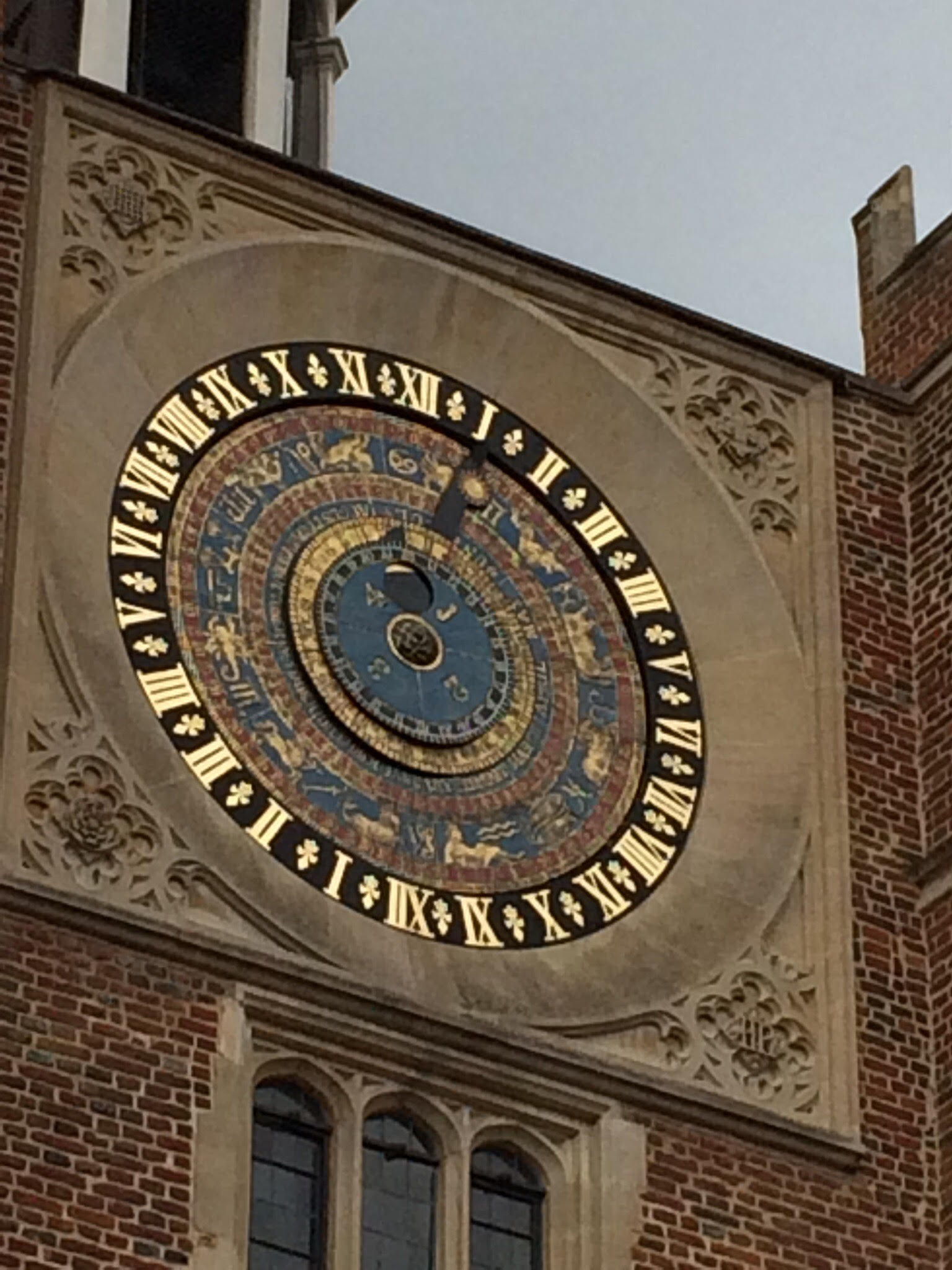
This clock was installed in 1540 on the gatehouse to the inner court at Hampton Court Palace. This pre-Copernican and pre-Galilean astronomical clock is still functioning.
The clock is 15 feet in diameter with three separate copper dials revolving at different speeds and displays the following information:
-Hour
-Month
-Day of month
-Position of the sun in the ecliptic
-Twelve signs of the zodiac
-Number of days elapsed since the beginning of the year
-Phases of the moon
-Age of the moon in days
-Hour when the moon crosses the meridian and thus high water at London Bridge.
The information about tides at London Bridge was of great importance to those visiting this Thames-side palace from London, as the preferred method of transport at the time was by barge, and at low water London Bridge created dangerous rapids.
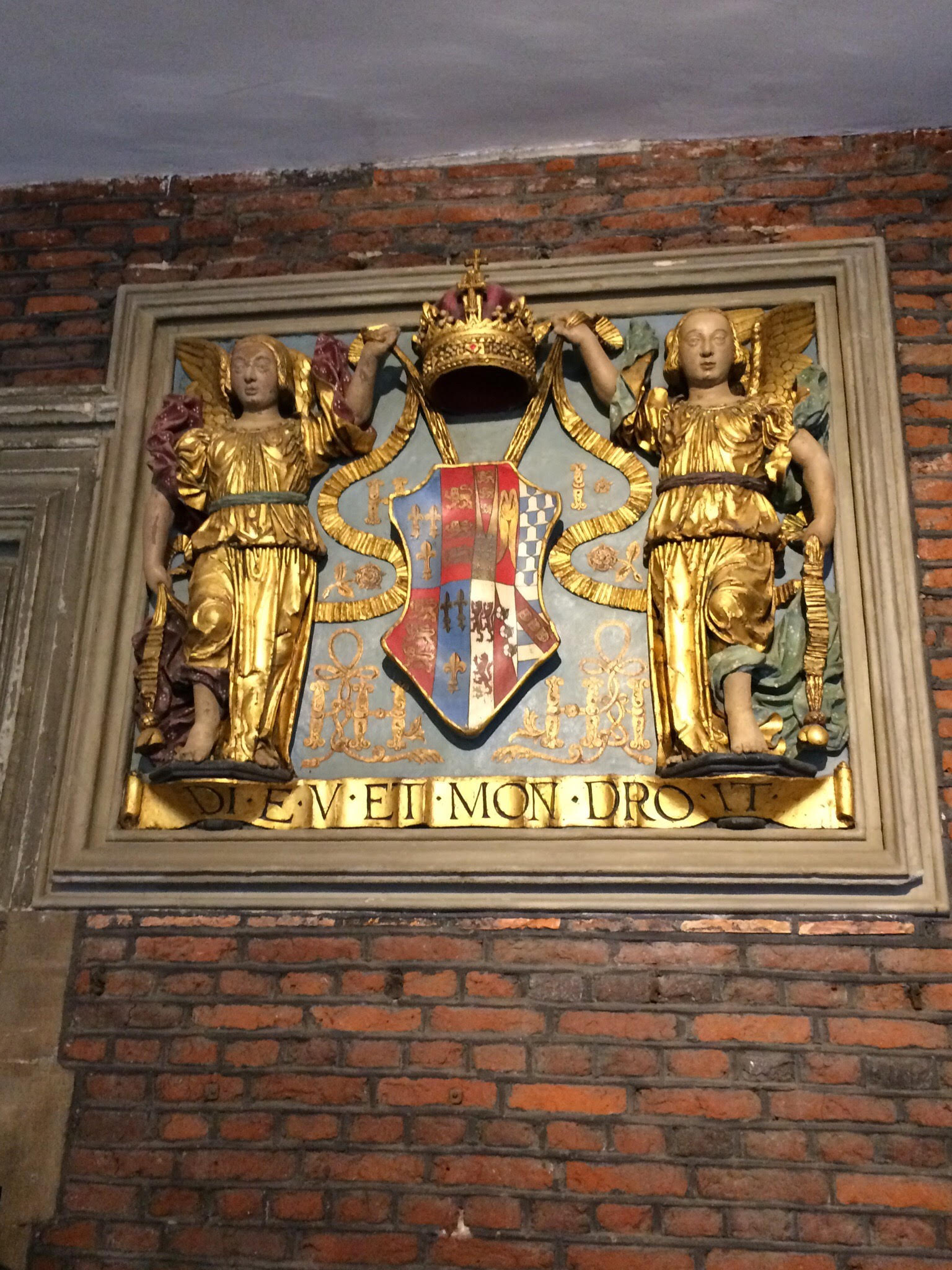
This set of angels, crown, and shield mark the entrance to the royal chapel at Hampton Court. Jane Seymour was Henry VIII’s third wife; she died at Hampton Court after giving birth to Henry’s son Edward. king Henry was devastated at the sudden loss of his ‘perfect’ queen. Her heart is buried beneath the altar of the chapel. A sad white wraith carrying a lighted taper is seen walking hallways of the palace and is thought to be Jane Seymour’s ghost.
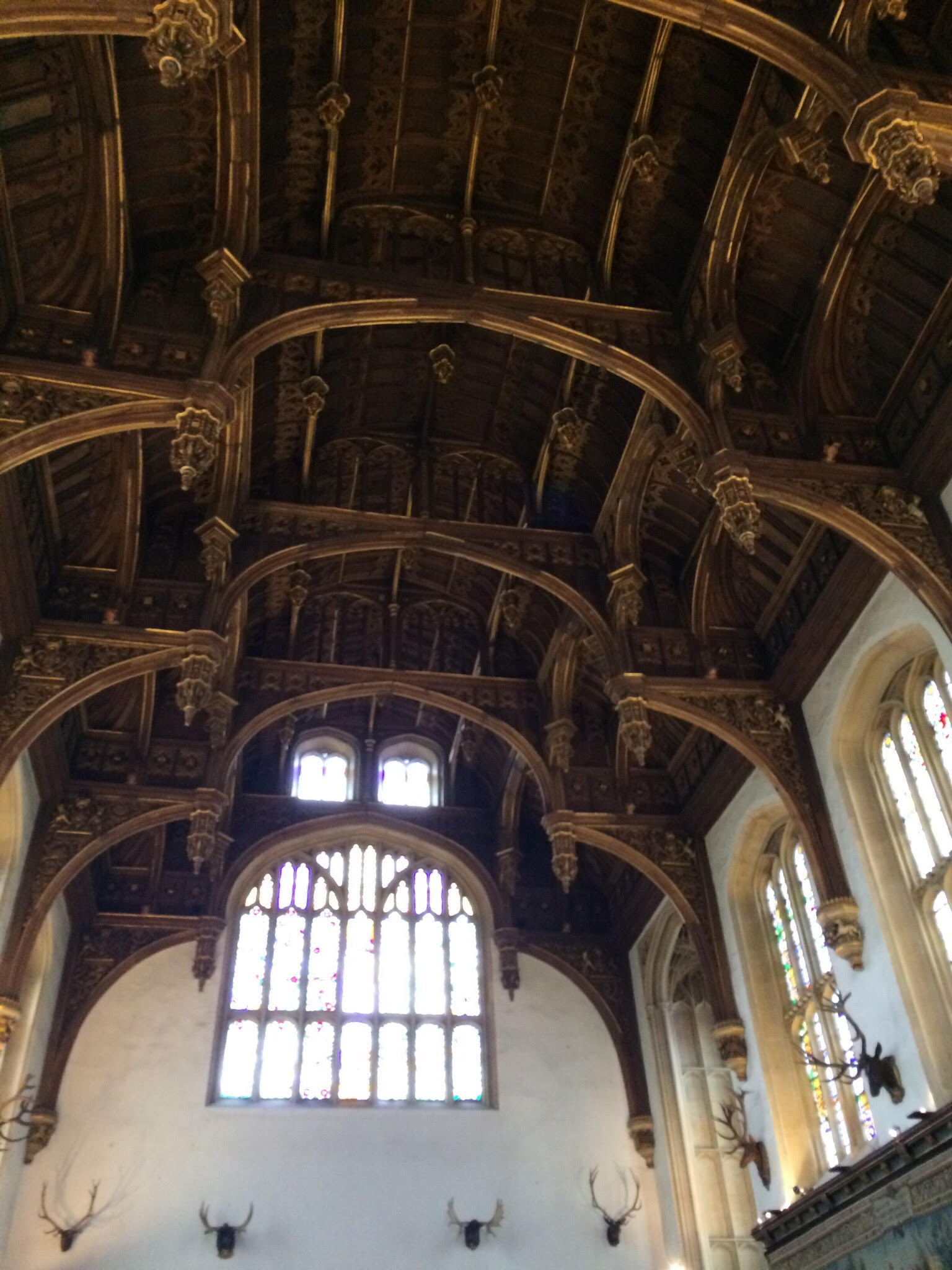
Feasts and banquets were held in the Great Hall of Hampton Court. Dishes included game, roasted or served in pies, lamb, venison and swan. More unusual items, such as conga eel and porpoise could also be on the menu. Only the king was given a fork, with which he ate sweet preserves. Forks were used to serve, cook and carve, but eating with them didn’t become popular until the 17th century.
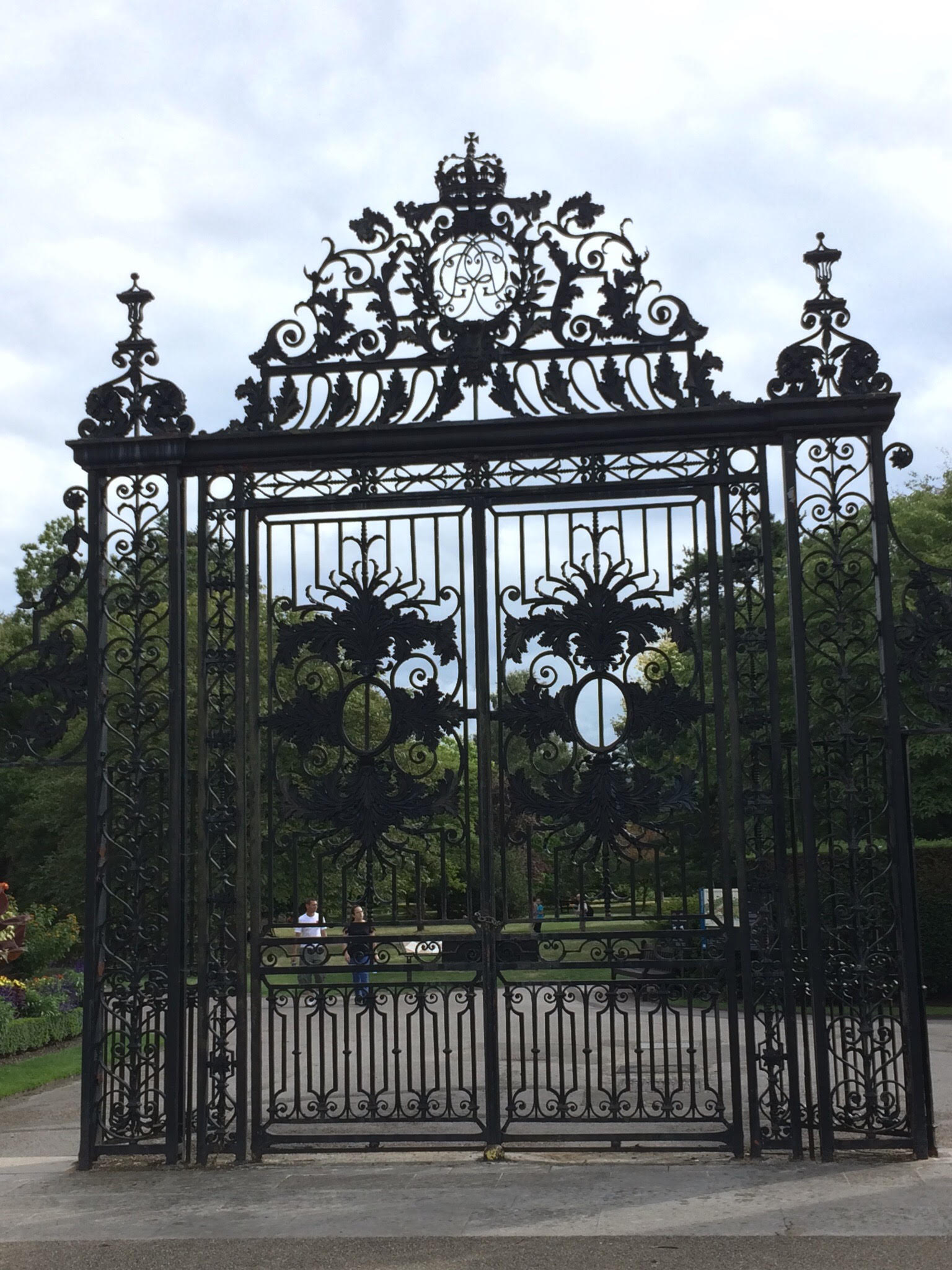
Lion’s Gate at Hampton Court. (photo by S. Morris)
